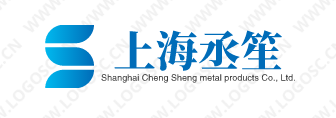华盛顿大学用激光制冷液体
2018-6-26 10:12:16 点击:

中国科技网11月17日报道(张微 编译)自1960年激光发明以来,它们总是发出热量,或者作为一个用途广泛的工具,一种副产品,也经常以一种虚构的方式被用来征服银河系的敌人。
但是这些激光束却从来没有用来冷却液体。华盛顿大学的研究人员首次解决了这个存在了几十年的难题,他们在现实条件下,实现了用激光冷却水和其它液体。
这一研究成果发表于11月16日出版的《美国国家科学院院刊上》,该团队利用红外激光将水冷却到36华氏度,这是该领域的一项重大突破。
“如果你看过电影星球大战,就会知道电影里面的激光炮能够使物体升温。而这一次,是首次利用激光束在日常条件下冷却像水这样的液体,” 这篇论文的主要作者,也是华盛顿大学材料科学与工程专业助理教授Peter Pauzauskie说。“这种做法是否能够成功,确实是一个悬而未决的问题,因为我们都知道,水被光束照亮,就会变暖。”
这个发现能够帮助工业领域,利用集中光束在一个微小的面积里实现“点冷”操作。举个微处理器的例子,可能会有那么一天,使用激光束来冷却计算机芯片中的特定部件,以防止过热,这样也能让信息处理的效率更高。
科学家们也能利用激光束,在细胞分裂或自我修复时,通过精确地冷却细胞的一部分,减缓它们的分裂和自我修复过程,从而让研究人员有机会了解细胞是如何工作的。也可以在神经网络中单独冷却一个神经元——只是让这个神经元不再活跃,并没有损害它——通过这种方式来了解附近的神经元如何绕过它以及实现自我修复。
“对于细胞如何分裂,分子和酶如何实现它们的功能,还有许多令人感兴趣的方面,但在以往却没有办法做到通过冷却的方式来研究它们的特性,” Pauzauskie说,他也是来自华盛顿州里奇兰,美国能源部的太平洋西北国家实验室的科学家。“利用激光冷却,有点像将电影中的生命的活动过程进行慢动作展示,优点是,你不需要冷却整个细胞,如果冷却整个细胞就会杀死它或改变它的行为。”
华盛顿大学的研究团队选用红外光作为冷却激光,实现在生物学领域的应用,因为可见光会对细胞有破坏作用,能够将它们“晒伤”。他们证实激光也能冷却盐水和细胞培养基(在遗传和分子研究领域常用)。
为了实现这项突破,华盛顿大学研究团队使用了商业激光领域常见的一种材料,但本质上却与激光现象相反。他们用红外激光照射一个悬浮在水中的微小晶体,激发出一种独特的光线,这个光线的能量比光吸收的能量要稍微多一点。
这种高能光从晶体和包围着它的水中带走了热量。首次激光冷却过程是1995年美国洛斯阿拉莫斯国家实验室在真空条件下实现的,近20年后在液体中,再次实现了这个过程。
通常情况下,激光晶体的生长是一个昂贵的过程,需要花费大量的时间和美元,只能生产仅仅一克材料。华盛顿大学的研究团队还发明了一个低成本的水热方法,可用于制造著名的激光晶体,以更加快捷、低成本和可扩展的方式实现激光冷却应用。
华盛顿大学的研究团队还设计了一种仪器,使用激光阱(类似于微牵引光束),将一个侵入液体中的纳米晶体“困在”液体室里,并用激光照射它。为了确定液体是否冷却,这个仪器能够投射粒子的“影子”,通过这种方式研究人员能够观察它运动过程中每分每秒的变化。
当周围的液体变冷时,被困住的颗粒就会慢下来,从而让研究团队清楚地观察冷却效果。他们还设计了一种晶体,当冷却时能够实现从蓝绿到泛红的颜色变化,就像一个内置的彩色温度计。
“这个项目的真正挑战是建造一个仪器,以及设计一种方法,利用与困住晶体相同光线的特征,也能够确定这些纳米晶体的温度,”论文的主要作者派登 罗德说,他刚刚获得威斯康辛大学材料科学与工程专业博士学位,目前在英特尔工作。
到目前为止,华盛顿大学的研究团队仅仅展示了单一纳米晶体的冷却效果,而激发多个晶体需要更多的激光能。激光冷却过程目前比较耗能,Pauzauskie说,下一步的研究包括寻找提高效率的方法。
有一天,冷却技术本身也可以通过高功率激光,用来实现制造、电信或国防领域应用,而目前高功率激光往往容易过热以及将物体融化。
“因为利用激光冷却液体之前是不可能做到的,所有现在人们不会一下子就想到如何利用这项技术来解决问题,”他说。“我们就感兴趣的是,我们的研究对其他科学家或企业的想法产生何种影响,会不会影响他们的基础研究或底线,让他们不再墨守成规或固执己见。”

英文原文:
Research team refrigerates liquids with a laser for the first time
Since the first laser was invented in 1960, they've always given off heat—either as a useful tool, a byproduct or a fictional way to vanquish intergalactic enemies.
But those concentrated beams of light have never been able to cool liquids. University of Washington researchers are the first to solve a decades-old puzzle—figuring out how to make a laser refrigerate water and other liquids under real-world conditions.
In a study to be published the week of Nov. 16 in the Proceedings of the National Academy of Sciences, the team used an infrared laser to cool water by about 36 degrees Fahrenheit—a major breakthrough in the field.
"Typically, when you go to the movies and see Star Wars laser blasters, they heat things up. This is the first example of a laser beam that will refrigerate liquids like water under everyday conditions," said senior author Peter Pauzauskie, UW assistant professor of materials science and engineering. "It was really an open question as to whether this could be done because normally water warms when illuminated."
The discovery could help industrial users "point cool" tiny areas with a focused point of light. Microprocessors, for instance, might someday use a laser beam to cool specific components in computer chips to prevent overheating and enable more efficient information processing.
Scientists could also use a laser beam to precisely cool a portion of a cell as it divides or repairs itself, essentially slowing these rapid processes down and giving researchers the opportunity to see how they work. Or they could cool a single neuron in a network—essentially silencing without damaging it—to see how its neighbors bypass it and rewire themselves.
"There's a lot of interest in how cells divide and how molecules and enzymes function, and it's never been possible before to refrigerate them to study their properties," said Pauzauskie, who is also a scientist at the U.S. Department of Energy's Pacific Northwest National Laboratory in Richland, Washington. "Using laser cooling, it may be possible to prepare slow-motion movies of life in action. And the advantage is that you don't have to cool the entire cell, which could kill it or change its behavior."
The UW team chose infrared light for its cooling laser with biological applications in mind, as visible light could give cells a damaging "sunburn." They demonstrated that the laser could refrigerate saline solution and cell culture media that are commonly used in genetic and molecular research.
To achieve the breakthrough, the UW team used a material commonly found in commercial lasers but essentially ran the laser phenomenon in reverse. They illuminated a single microscopic crystal suspended in water with infrared laser light to excite a unique kind of glow that has slightly more energy than that amount of light absorbed.
This higher-energy glow carries heat away from both the crystal and the water surrounding it. The laser refrigeration process was first demonstrated in vacuum conditions at Los Alamos National Laboratory in 1995, but it has taken nearly 20 years to demonstrate this process in liquids.
Typically, growing laser crystals is an expensive process that requires lots of time and can cost thousands of dollars to produce just a single gram of material. The UW team also demonstrated that a low-cost hydrothermal process can be used to manufacture a well-known laser crystal for laser refrigeration applications in a faster, inexpensive and scalable way.
The UW team also designed an instrument that uses a laser trap—akin to a microscopic tractor beam—to "hold" a single nanocrystal surrounded by liquid in a chamber and illuminate it with the laser. To determine whether the liquid is cooling, the instrument also projects the particle's "shadow" in a way that allows the researchers to observe minute changes in its motion.
As the surrounding liquid cools, the trapped particle slows down, allowing the team to clearly observe the refrigerating effect. They also designed the crystal to change from a blueish-green to a reddish-green color as it cools, like a built-in color thermometer.
"The real challenge of the project was building an instrument and devising a method capable of determining the temperature of these nanocrystals using signatures of the same light that was used to trap them," said lead author Paden Roder, who recently received his doctorate from the UW in materials science and engineering and now works at Intel Corp.
So far, the UW team has only demonstrated the cooling effect with a single nanocrystal, as exciting multiple crystals would require more laser power. The laser refrigeration process is currently quite energy intensive, Pauzauskie said, and future steps include looking for ways to improve its efficiency.
One day the cooling technology itself might be used to enable higher-power lasers for manufacturing, telecommunications or defense applications, as higher-powered lasers tend to overheat and melt down.
"Few people have thought about how they could use this technology to solve problems because using lasers to refrigerate liquids hasn't been possible before," he said. "We are interested in the ideas other scientists or businesses might have for how this might impact their basic research or bottom line."
来源: 中国科技网
- 上一篇:美研究小组成功研发出实时可调节等离子体激光器 2018/7/5
- 下一篇:科学家利用超快激光脉冲实现纳米级3D打印 2018/6/26


 沪公网安备 31012002004070号
沪公网安备 31012002004070号